SAS Tutorial for Beginners: What is & Programming Example
Mục lục bài viết
What is SAS?
SAS is a command-driven statistical software suite widely used for statistical data analysis and visualization. SAS full form is Statistical Analysis Software. It allows you to use qualitative techniques and processes which help you to enhance employee productivity and business profits. SAS is also used for advanced analytics like business intelligence, crime investigation, and predictive analysis. SAS is pronounced as “SaaS.”
In SAS, data is extracted & categorized which helps you to identify and analyze data patterns. It is a software suite which allows you to perform advanced analysis, Business Intelligence, Predictive Analysis, data management to operate effectively in the competitive & changing business conditions. Moreover, SAS is platform independent which means you can run SAS on any operating system either Linux or Windows.
Compared to other BI tools, SAS provides extensive support to programmatically transform and analyze data, apart from using the drag and drop interface. This provides very granular control over data manipulation and analyzes which is its USP.
In this SAS tutorial for beginners, you will learn
Why do we need SAS?
Let’s understand the need for SAS with a simple example:
Consider an e-commerce company that wants to know the buying patterns of its customers based on historical data. The company will have to consider thousands of records of multiple customers, to get the generalize insight.
The company may not have all these data required for the analysis. For example, if a customer did not buy a Jacket, then what are the factors which stopped them not buy the Jacket? This missing data could create errors in your analysis. How can you we get rid of these problems? How can we handle this type of data?
If done manually, this task will require hundreds of analysts and thousands of man-hours. By using SAS analytic tool, you can do the same analysis in a matter of hours with a single analyst. SAS tool allows you to eliminate unnecessary data and optimize the relevant information. It will enable you to predict an outcome even with missing data. SAS enables you to take better decisions.
Alternative SAS Tools


R: It is open-source software. It is easy to learn R as it is well documented. It offers strong statistical capabilities.
Python is another popular open-source scripting language. It is supports libraries such as Numpy, Scipy, and MatPlotLib. You can perform any statistical operation, or you can build any model using these libraries.
SAS: It is the widely used analytical tool in the commercial analytics market. With a plethora of statistical functions and good GUI.
In this SAS programming tutorial, we will discuss about Statistical Analytical Systems, and how it can be used to solve our problems.
SAS history
- SAS was developed by Jim Goodnight and John Shall in 1970 at N.C. University
- Initially, it was developed for Agricultural Research.
- Later, it expanded to a gamut of tools to include Predictive Analytics, Data Management, BI among others.
- Today 98 of world’s top companies in fortune 400 uses SAS data analytical tool for Data analysis.
Next in this SAS language tutorial, we will learn about features of SAS.
SAS Features
Key features of SAS are:
- Easily access raw data files & data in from an external database. Read and write almost any data format!
- Manage data using tools for data entry, editing retrieval, formatting & conversion
- Analyze data using descriptive, statistics, multivariate techniques, forecasting, modeling, linear programming
- Advanced analytics helps you to make changes and improvements in business practices.
- Report formation with perfect graphs
- Operations research and project Management
- Data updating and modification
- Powerful data handling language
- Excellent data cleansing functions
- Interact with multiple host systems
Next in this SAS for beginners tutorial, we will learn about SAS Product suite.
SAS Product Suite
There are many SAS products is available in the market. Following is a list of the more popular ones.
Name
Description
Base SAS
Base SAS software offers hardware agility and integrates into all kind of computing environment.
SAS/GRAPH
This tool helps you to represent structured data into graphs.
SAS/STAT
This tool helps you to perform different types of regression, statistical analysis variance, regression, and psychometric analysis.
SAS/ETS
It is used for forecasting. Helps you to perform the time series analysis.
SAS/IML
Interactive Matric language is known as IML. This tool helps you to translate mathematical formulas into an innovative program.
SAS EBI
A tool for Business Intelligence Applications
SAS Grid Manager
It is a core component which offers data management facility and a programming language for data analysis
SAS/OR
Tool for Operation research
SAS/QC
Use for Quality control
SAS/Enterprise Miner
Data mining
SAS/PH
Clinical trial analysis
SAS/AF
It offers applications facility
Enterprise Guide
It is a GUI based code editor & project manager
Next in this SAS tutorials guide, we will learn about SAS architecture.
SAS Architecture


Architecture of SAS
SAS architecture is divided mainly of three parts:
- Client Tier
- Middle Tier
- Back tier
Client tier:
Client tier is where the application is installed on a machine, where the user is sitting. It consists of the components which are used to view the portal and its content. It also includes a standard web browser that is used to interact with the portal over standard HTTP or HTTPS protocol. It also helps you to make the SAS web application firewall friendly.
Middle tier:
The middle tier offers a centralized access point for enterprise information. All access to content is processed by components operating of this tier. The separation of the business logic with display logic helps you to leverage the logic of the middle tier. Moreover, centralized points of access make it easier to enforce security rules, administer the portal and manage code changes.
The middle tier hosts the following functions:
SAS Information Delivery Portal Web Application: It is the collection of JSP, Java servlets, JavaBeans, and other classes and resources. These components help you to access information stored in the enterprise directory to create a customizable interface for the user.
Servlet Engine: The servlet engine is also called a servlet container. It is responsible for managing the SAS Information Delivery Portal Web Application. The servlet engine offers a run time environment. It provides concurrency, deployment, lifecycle management, etc.
Web server: Web server offers service for the servlet engine which can be used to host website. This should be accessed using the portal.
Back Tier:
The back tier is an area where the data and computation servers run which may contain business objects. It is an enterprise directory server. The enterprise directory server maintains metadata about content which is located throughout the enterprise.
How to Download and Install SAS
Local Download in your machine
Step 1) Download SAS from given link
Go to this link https://www.sas.com/en_in/software/university-edition.html and click on Get Free Software.


Step 2) Select your Operating System
Select the operating system as per your system.

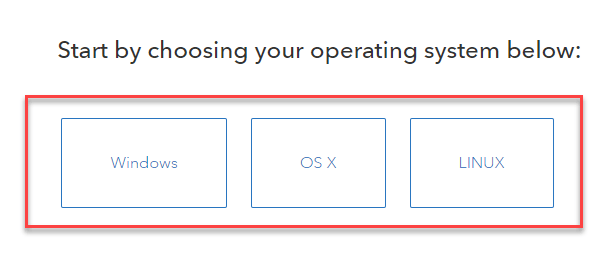
Step 3) Download and install Virtualization Software
SAS requires Virtualization Software like VirtualBox to be installed before it can be installed. Here are the detailed steps


Follow the steps mentioned onscreen to install SAS. Having VirtualBox and local install could sometime be tricky. We recommend AWS installation-
AWS Installation
You can deploy SAS in AWS. It’s eligible for free tier.
Step 1) Go to https://aws.amazon.com/marketplace/pp/B00WH10IKW. Click “Continue to Subscribe”


Step 2) In this next screen, Accept Terms.

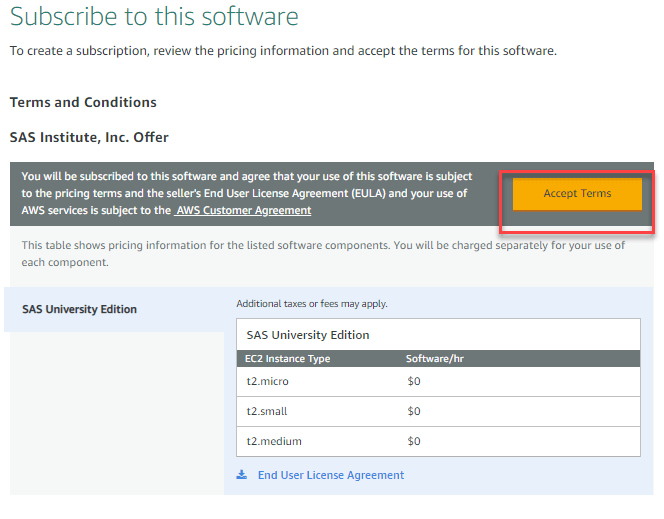
Step 3) The subscription is pending takes up to 10 minutes to approve. You will see the following screen.


Step 4) Refresh the page, and you will subscription confirmed. Click on Continue to Configuration


Step 5) Keep settings default and click Continue to Launch.


Step 6) Review the config page. Enter a key-value pair. Rest settings should be the default. Click Launch


Step 7) Go to https://aws.amazon.com/marketplace/library/ and click on View Instances.

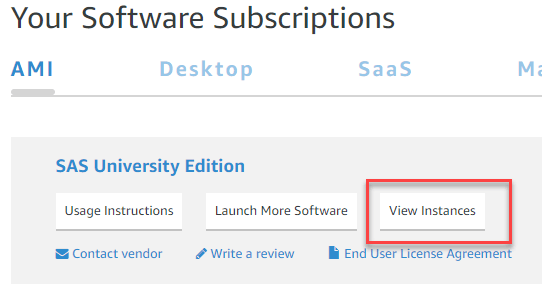
Step 8) In the popup
- Note the instance id. This is your password
- Click Access software

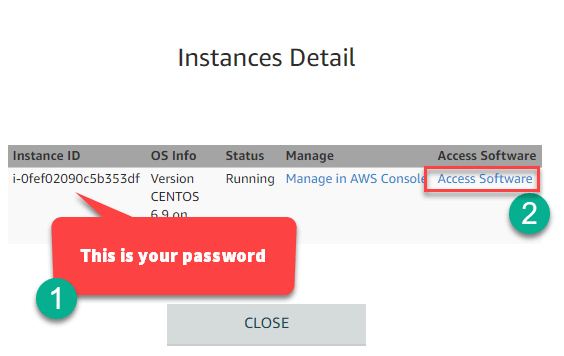
Step 9) In the popup, that appears after you click in step 8
- Enter user credentials. Id: sasdemo password: instance id noted in step 8
- Click Sign in


Step 10) You will see the welcome screen.


Troubleshooting
If you are not able to connect, go to https://console.aws.amazon.com/ec2/v2/home?region=us-east-1#SecurityGroups:sort=groupId and inbound/outbound rules to all
How to Use SAS?
To effectively use SAS software you need to follow four steps which are: Access Data, Management Data, Analyze, Present


How to use SAS
Access Data:
SAS allows you to access data in any desired format that you want.
You can access data that is stored anywhere, whether it is in a file on your system or data that is stored in another database system. It can be oracle file, SAS database file, Raw Database file or a simple XLS /CSV file. It will help you to access this data with ease.
Manage Data:
SAS offers great data management capabilities. You can subset/slice data based on certain conditions, create variable, clean & validate data. There are other tools which allow you to perform the same task. However, SAS helps you to perform this job with ease.
SAS has well-defined libraries and processes which makes the programming process easy. Moreover, creating variable or subset data is just one step process. This saves you from writing complex algorithms by just a single line of code.
Analyze:
You can do various kinds of analyze using SAS:
- It checks Frequency of Mean calculation
- Regression and Forecasting
- Decision Tree
All these analyzes can easily handle by SAS. It is the best tool for accurate forecasting.
Present:
If you visualize data correctly, it is effortless for the audience to relate to it. It is essential that your tool present the data in a suitable manner. That’s what SAS does for you. It has excellent presentation capabilities.
You can:
1. List reports
2. Summary reports
3. Graph reports
4. Print reports
SAS Program Example
SAS Program consists of three necessary steps:
- Data Step
- Proc Step
- Output Step
DATA Step:
Data step loads the needed data set into SAS memory and finds the correct variables of the data set. It also captures the records. We can use data steps to:
- Enter data into SAS data sets
- Compute Values
- Check or correct data
- Produce new data sets
The syntax for DATA statement is:
Syntax
DATA data_set_name; #Give a name to the dataset INPUT var1,var2,var3; #Declare variables in the dataset. NEW_VAR; #Define new variables. LABEL; #Give variables a label DATALINES; #Provide data RUN;
Example:
Following example show how to define a variable, naming the data set, creating new variables and entering the data. In this example, you can see that string variable have a $ at the end, and numeric values are without it.
INPUT ID $ NAME $ SALARY DEPARTMENT $; comm = SALARY*1.50; LABEL ID = 'Emp_ID' comm = 'COMMISION'; DATALINES; 1 Tom 5000 IT 2 Harry 6000 Operations 3 Michelle 7000 IT 4 Dick 8000 HR 5 John 9000 Finance ; RUN;
Note: To execute SAS Statement need to specify the RUN command.
PROC Step
It performs specific analysis or functions to produce results and reports.
Syntax
PROC procedure_name options; #The name of the proc. RUN;
Example
The given example uses the MEANS procedure to print the mean values of the numeric variables in the data set.
PROC MEANS; RUN;
The OUTPUT Step
You can display the data from the data with conditional output statements.
Syntax
PROC PRINT DATA = data_set; OPTIONS; RUN;
Every SAS program must follow all the above mentions steps to read the input data, analyzing the data and giving the output of the analysis. The RUN statement at the end of each step finishes the execution of that step.
The complete SAS Program
Below given is the complete code for each of the above steps.


Output:





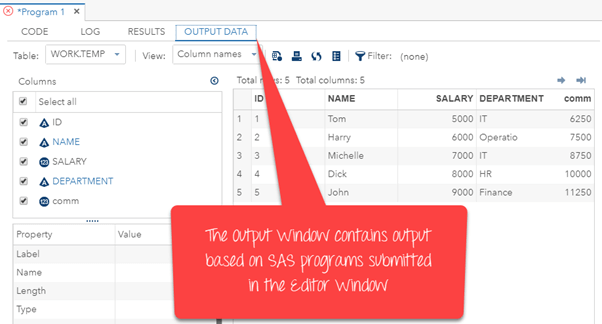
Where is SAS used?
Below given are some important SAS applications:
Industry
Usage
Pharmaceutical
Statistical Analysis, Reporting
Telecom
ETL, Reporting, Data Mining, Forecasting
Financials
ETL, Reporting, Data Mining, Financial research
Predictive modeling
DBMarketing, Activity-Based Management
Healthcare
ETL, reporting, Data Mining
SAS Vs. R
SAS
R
SAS is commercial software, so it requires a financial investment.
R is open source software. Hence anyone can use it.
SAS is an easiest analytical tool to learn. Even people with limited knowledge of SQL can learn it quickly.
R requires you to write complicated and lengthy codes.
SAS is a highly preferred choice by big companies and is quite technically advanced & user-friendly.
R is fast developing software; however, you need to keep upgrading it.
SAS has good graphical support but does not offer any customization.
Graphical support of R tool is very poor.
Advantages of SAS
- SAS has an easy syntax which can be learned without any type of programming knowledge
- Ability to handle a large database with ease
- SAS is a very comprehensible language which can easily be debugged
- Its “log” window clearly states the error which helps you to debug your code easily
- SAS helps you thoroughly test and analyze the algorithm
- SAS is completely secured so you can’t extract without a license in the office
- Makes statistical computing easier for the non-programming users
- Handles large size database effectively.
Disadvantages of SAS
- Cost is high because individual or organization can’t use it all applications without a proper license
- SAS is not open source so, algorithms used in SAS are not available for common use
- Text mining is a very troublesome and difficult process in SAS.
Summary
- SAS software meaning Statistical Analysis Software which is used for Data analytics
- R and Python are two widely used alternative tools of SAS.
- SAS was developed by Jim Goodnight and John Shall in1970 at N.C. University
- SAS allows you to access raw data files & data in an external database of any kind
- SAS architecture is divided mainly of three parts 1)Client Tier 2) Middle Tier 3) Back tier
- To use SAS software you need to follow four steps which are: 1)Access Data, 2)Management 3) Analyze Data, 4) Presentation
- SAS Program consists of three basic steps: Data Step, Proc Step, and Output Step
- SAS data analytical tool is widely used in sectors like Pharmaceutical, Telecom, Financials, Predictive modeling, and Healthcare
- SAS is commercial software while R is open source software
- The biggest benefit of SAS programmer tool is that it has an easy syntax that can be learned without any type of programming knowledge.
- One of the drawbacks of SAS model is that it is not an open source tool. So, algorithms used in SAS procedures are not available for common use.











